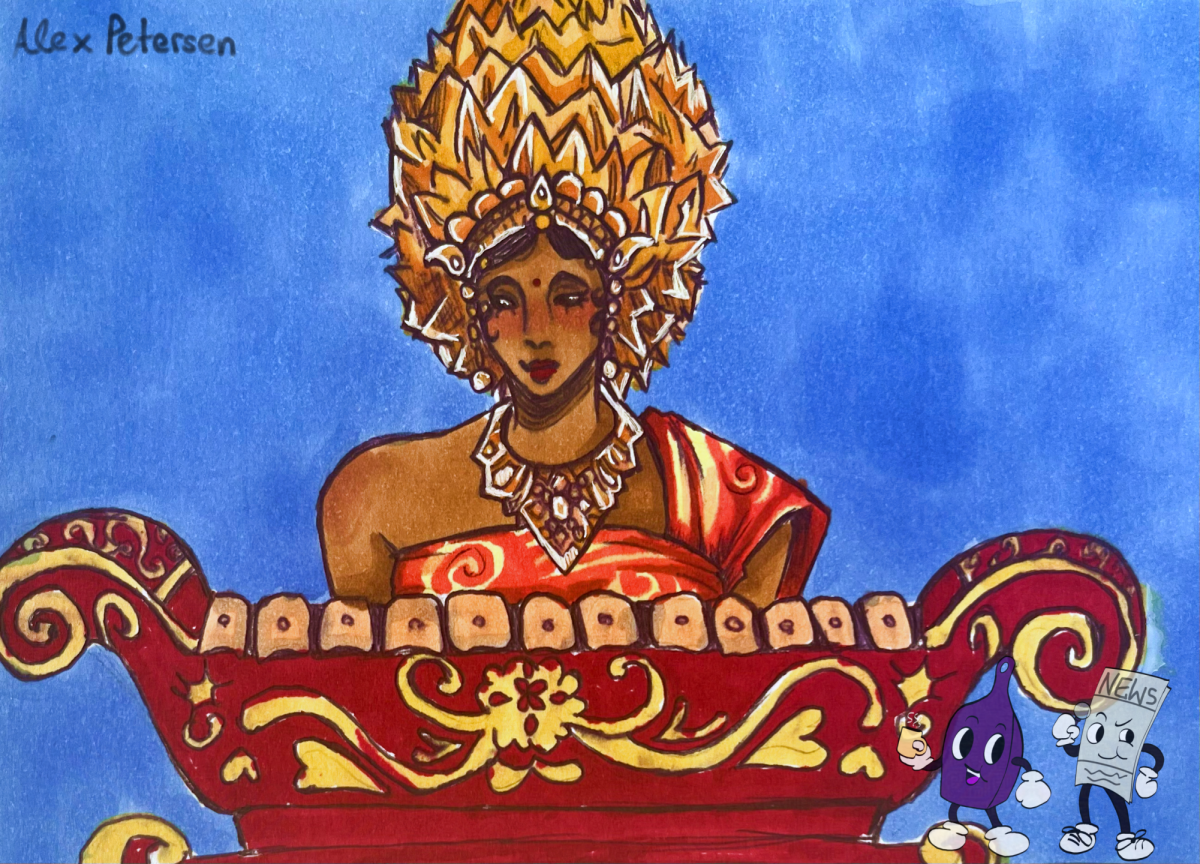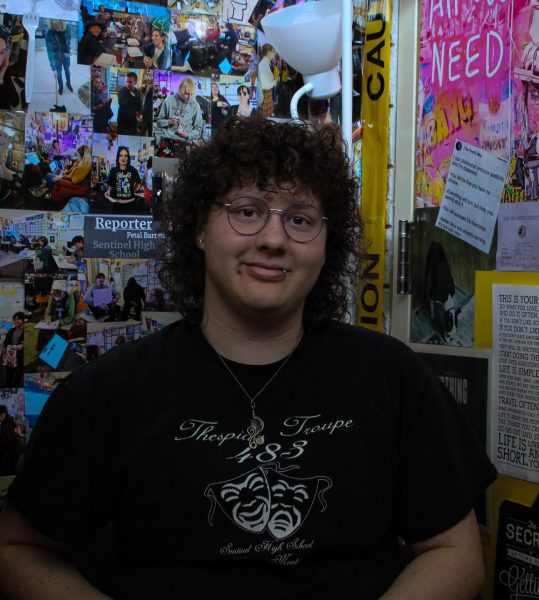Indonesia, a string of islands located in far southeastern Asia, is a brilliantly culture rich country. It has absorbed customs from many different cultures and religions over time, such as Buddhism, Islam, and Hinduism. The combination of these cultures resulted in an incredible collection of artistic elements.
The Borobudur (bur-ow-boo-dr) is the largest Hindu-Buddhist structure in the world, located on the Indonesian island Java. The Borobudur is a temple created in the Sailendra Dynasty (650-1025 CE.). The temple was used for religious practices for years until the 1400s when it was abandoned due to many Javanese people converting to Islam. Following the abandonment, it became a site for in depth architectural research due to the temple’s individuality in 1814, by the Dutch and Javanese.
Borobudur is in the Kedu Plain, which was praised for its remarkable agricultural purposes and an incredible sacred place in Java. On the Kedu Plain there are also two other temples, the Buddhist temples Pawon and Mendut. It has been theorized that these three temples have a specific relationship with one another due to their positioning in a perfectly straight line.
The base of the temple was built similarly to a pyramid, with intricately cut pieces of volcanic rock. The stones had to be either stacked perfectly or cut to interlock with one another in order to keep the temple standing, as no mortar was used in its construction. Mortar was normally used in construction to adhere the stones together for stability.
From above, Borobudur appears as if it is a mandala, a symbol representing the connection between Heaven and the Earth.
There are three sections to the temple as the universe in Buddhism is divided into three realms. The base of Borobudur portrays the realm of desire, Kamadhatu. Above Kamadhatu is the realm of forms, Rupadhatu, shown with square terraces. And lastly, Arupadhatu, the realm of formlessness, is represented by the top of the temple being covered by circular platforms and the stupa.
On the temple, there are 504 statues of the Buddha placed along with meticulously carved panels depicting life. The panels show many situations that people face, karma and passion. However, not all of them are negative, many show the effects of good actions as well as the livelihood and structure of Javanese society.
The story of the Buddha is one known famously throughout all Buddhist societies, but there are many Indonesian stories that are told frequently to teach morals and principles. One story, often told to children, was that of the mouse-deer or Kancil.
The mouse-deer is a clever creature who runs into many different characters, such as the crocodiles. The mouse-deer needs to cross a river of crocodiles and tricks them into believing that they must be counted. Jumping across the crocodiles and counting them off, however, angers the reptiles and one bites the leg of the mouse-deer. Staying calm, the mouse-deer holds out a stick claiming it’s the leg of the critter. This leads the crocodile to bite the stick, letting the mouse-deer run free.
These stories are still integral parts of Indonesian history and artwork. Stories such as the mouse-deer are told by word of mouth, in books, and quite often in puppet shows.
In Indonesia, they have a rich tradition of shadow puppetry where a puppeteer, called a dhalang, would take puppets made out of buffalo hide and perform behind a screen for an audience to create the illusion of shadow.
Scholars argue as to whether or not the art of Wayang kulit, or shadow puppetry in English, originated in Indonesia or if it came from somewhere else. Many of the characters that frequent the puppet shows are known to be spirits of Indonesia, such as the jester. Samar, the main jester, is said to be an ancestral spirit of Java, and he is used often in healing and protective ceremonies.
In the past, ceremonial puppet shows might be put on in order to ward off drought or pests using stories of goddesses like Dewi Sri, the rice goddess. In the modern day, these stories are not as frequently performed.
Under the rule of King Airlangga (1035-1049), a poet described peoples reactions to the shadow puppet shows: “There are people who weep, are sad and aroused watching the puppets, though they know they are merely carved pieces of leather manipulated and made to speak. These people are like men who, thirsting for sensuous pleasures, live in a world of illusion; they do not realize the magic hallucinations they see are not real.”
Cotton sheets and oil lamps used to be used in order to create the shadow illusions. Along with the lights and curtain, they give the puppets very specific costumes and figures to distinguish between different characters. They would over exaggerate the movements and emotions of the characters in order to properly convey the story to the audience.
The puppets would often be created out of buffalo hide and attached to sticks, allowing the puppeteer to control them without being seen. Using sticks would also allow for easy control over the puppets joints so that they could be manipulated to tell the story. Shadow puppets would be intricately painted despite not being seen but for behind the screen. In Indonesia, Wayang kulit is still performed to this day.
Oftentimes, they might be painted to resemble Indonesia’s ancient art of batik. Batik is a bright, colorful, patterned fabric that is made in a very distinctive way. Much like wayang kulit, it is debated whether batik originated in Indonesia. What is known is that evidence of it dates back 2000 years, making it one of the oldest forms of fabric textile.
Making batik takes an incredible amount of patience, time, and energy. It is traditionally a natural fabric with a drawn on pattern using wax. The wax blocks the dye from touching any area of the fabric that the artist would like to remain the original color. The fabric is then dyed as many times as it takes to achieve the desired effect.
Along with batik, the gamelan is a huge part of both the puppet shows and Indonesian culture. The gamelan is the most popular form of traditional music all across Indonesia but specifically in Java and Bali. It is an ensemble with many different instruments, gongs, drums, and xylophones to name a few. The name comes from the Javanese word for hammer, gamel, because of the bronze or brass instruments and the hammer-shaped mallets used to play them.
The xylophones or gambang kayu make up a large part of the ensemble. They are made of metal and played with mallets that appear almost as horns or fangs. The instrument is played by hitting the plates and grabbing them to halt the sound. Gongs, too, are consistently seen in the gamelan, either suspended or played similarly to the xylophones. Gongs played horizontally are known as bonang.
There are many other instruments that can be played in the gamelan, such as the bamboo flute (suling), a string instrument like the rebab, or accompanying vocals. Another common instrument to be seen is the Cheng Cheng Turtle, a small turtle statue with traditionally six cymbals attached to it and two that are held between the player’s fingers.
The instruments are all covered in intricately designed bamboo with red and gold but can also be other colors or contain paintings depicting people or monsters. The gamelan is used to accompany theater performances, puppet shows, or to be played in a performance of its own.
Indonesia was influenced by many different cultures and religions and created a rich, vibrant culture all its own.





